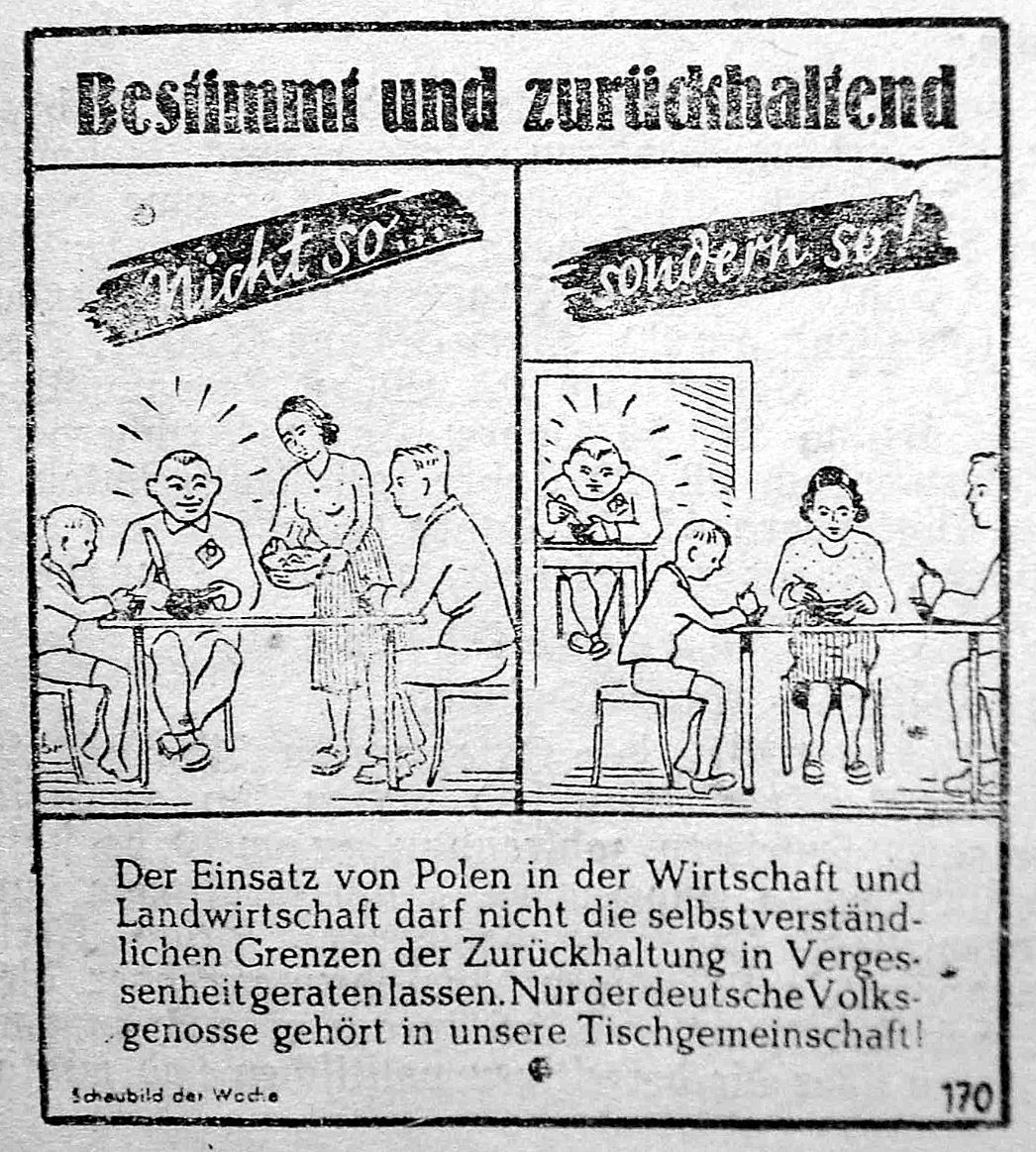
Instruction of the SS on the control of forced laborers, 1943

Order of the Munich Police President on dealing with forced laborers, 1944

Code of conduct of the Munich Police Headquarters for forced laborers from the Soviet Union, 1943

Leaflet for forced laborers from the Soviet Union, 1942

From the regulations for Polish forced laborers in the German Reich, 1941

Rules of conduct for Germans towards forced laborers in Sömmerda, 1944

Instruction to German employees of the Weimar Gustloff-Werke on how to behave towards forced laborers, 1942

From the regulations for Polish forced laborers in the German Reich, 1941

From the regulations for Polish forced laborers in the German Reich, 1941

From the regulations for Polish forced laborers in the German Reich, 1941

Rules of conduct for Germans towards forced laborers from a Munich company newspaper, 1942
Rules for Forced Labor
The Nazis considered the presence of millions of forced laborers in the German Reich a great danger—for public security as well as for the “racial purity” of the Germans. In order to ward off these supposed dangers, the Nazi security apparatus and labor administration issued harsh regulations beginning in 1940 and impacting the presence and behaviour of forced laborers. The “Poland Decree” went into effect in February 1940, and the “Eastern Workers Decree” was introduced in 1942. Overall, a complex range of regulations dictated all aspects of life for forced laborers.

©Niederösterreichisches Landesarchiv
©Niederösterreichisches Landesarchiv
Racism by the Book
Germans were also constantly confronted with strict and moralizing codes of behaviour towards forced laborers. They were strictly forbidden from having any contact with them or providing any form of help. A racist ideology guided all aspects of life.

©Bibliothek der Universität Wien
Hierarchies and Regulations
In correspondence with the Nazi racial ideology, forced laborers were subject to different rules depending on their race. At the very top of the racial hierarchy were “Arian” Germans as the master race, followed by people from northern and western Europe. At the bottom of the ladder were Poles, Soviet workers (Eastern Workers or Ostarbeiter) and finally Jews and Sinti and Roma. People from Poland, the Soviet Union, and Jewish people had to wear badges on their clothing. They were not allowed to move freely and were subject to draconian punishments.


